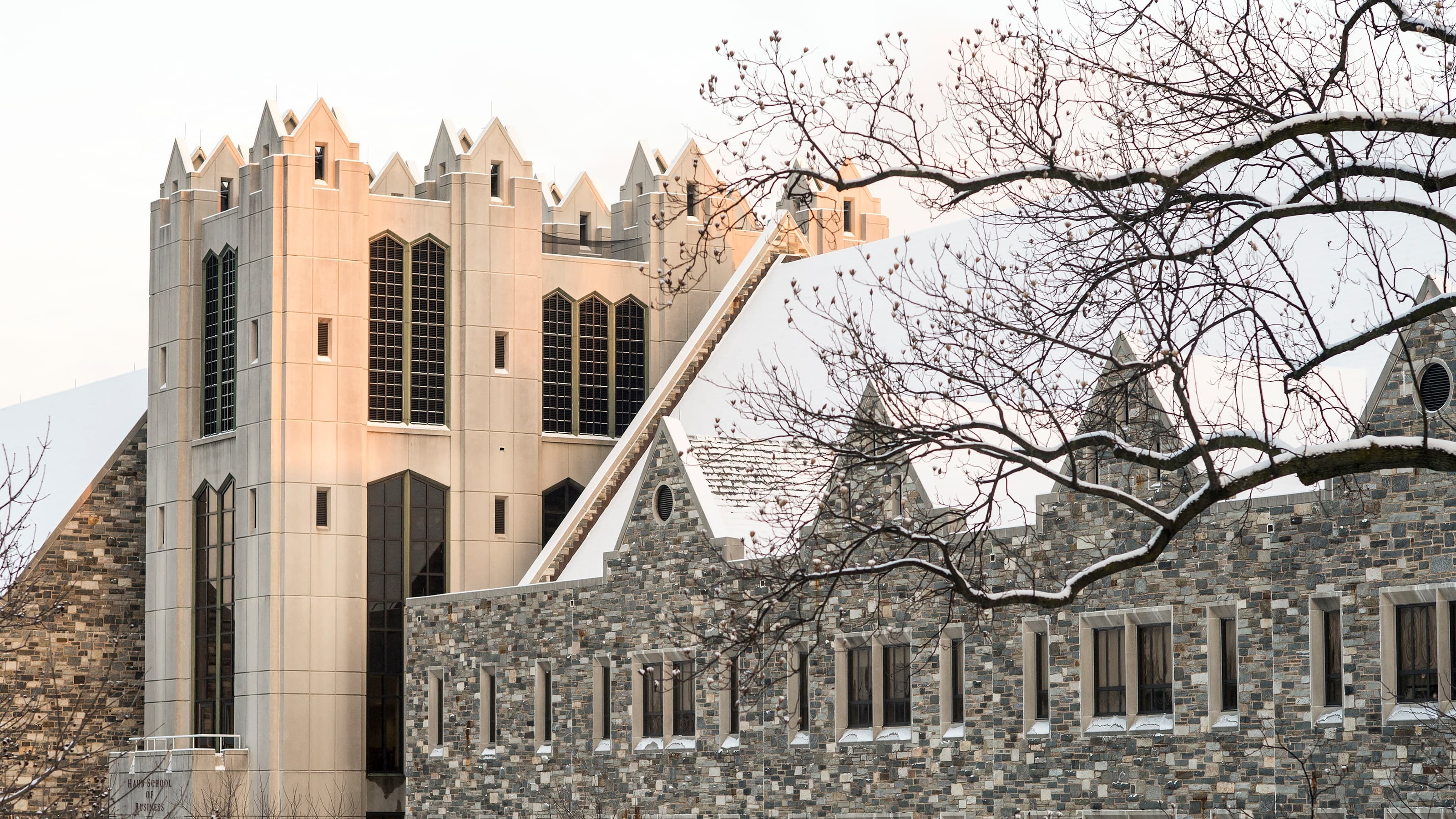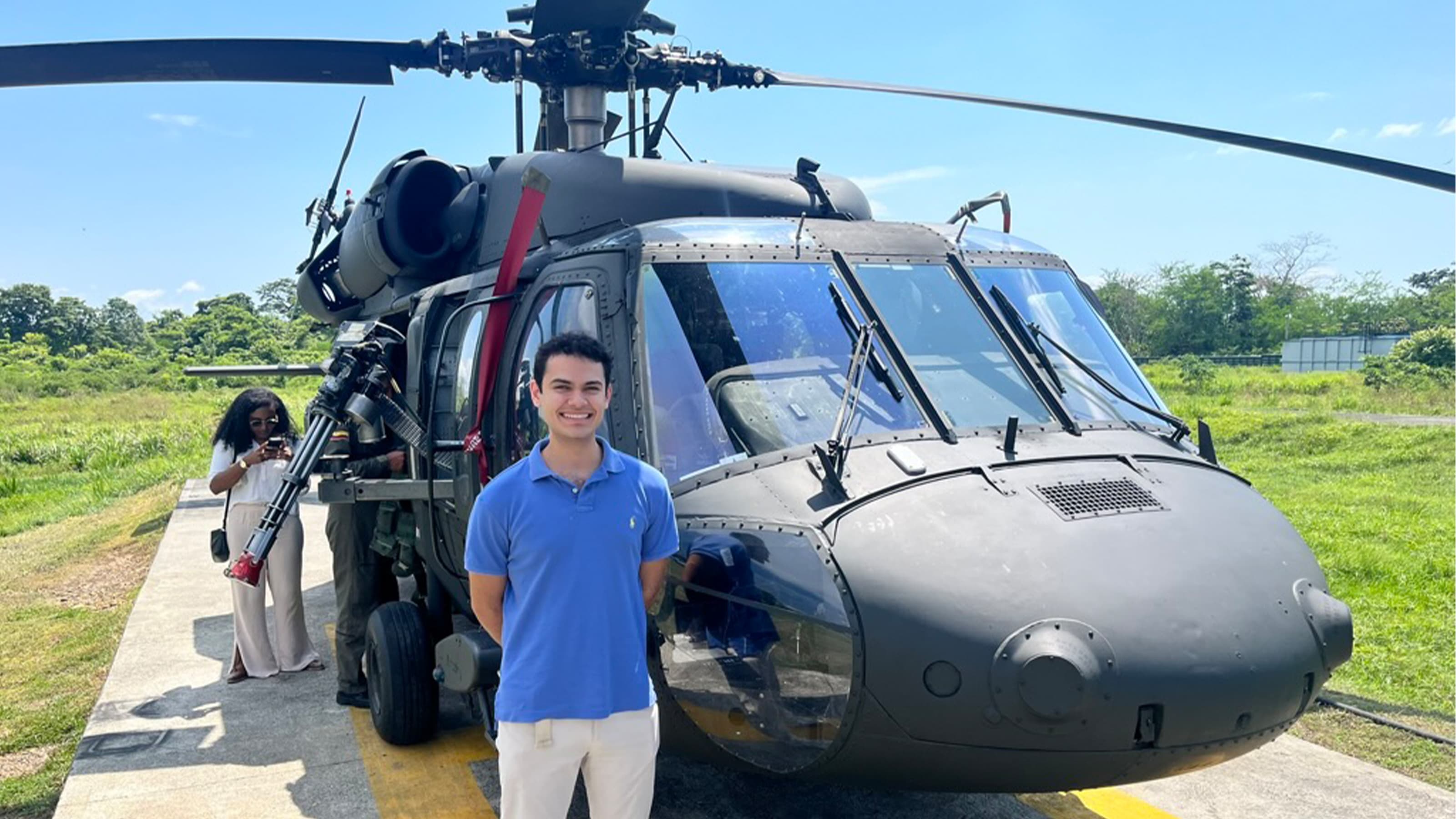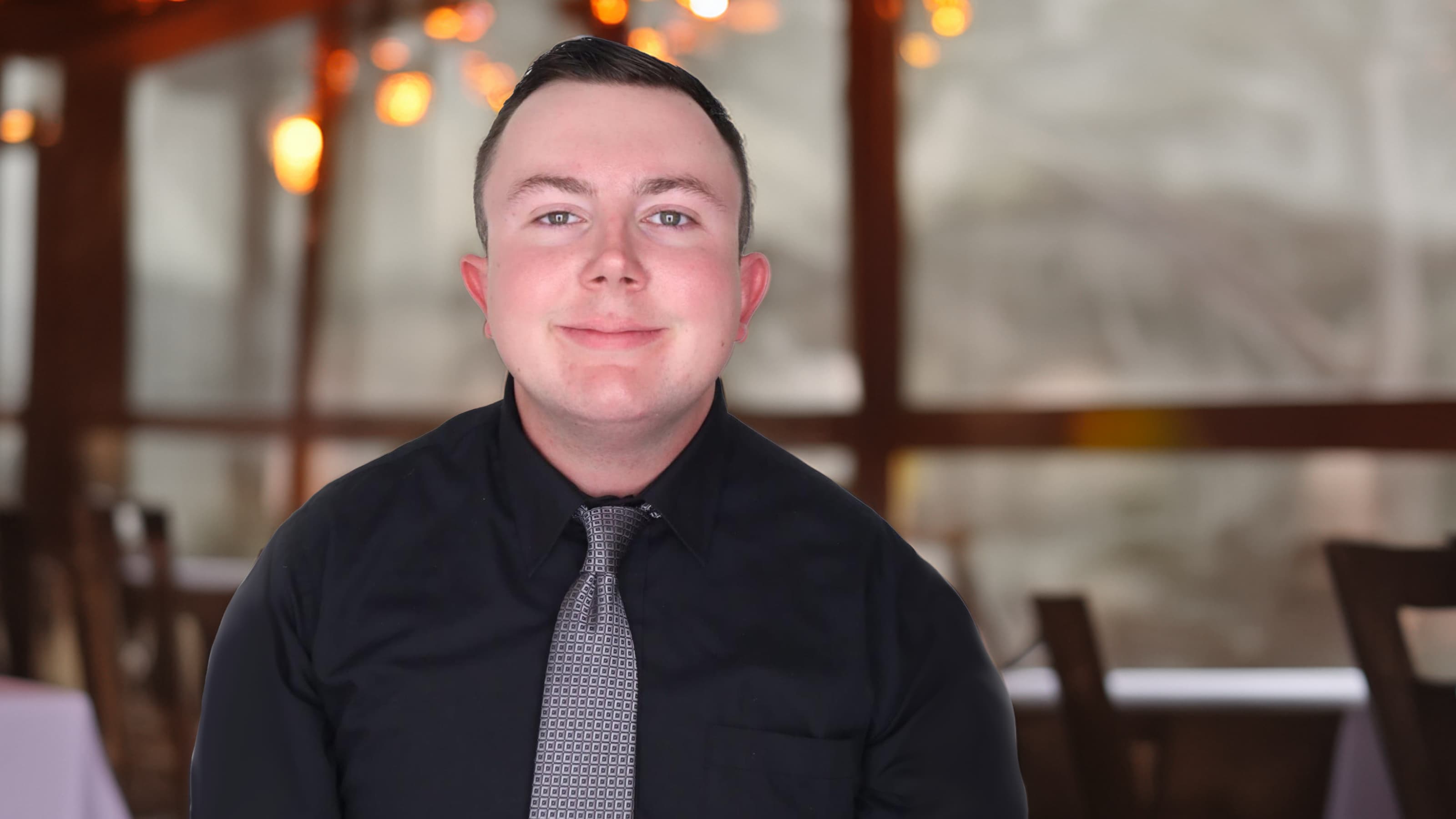Science Goes Virtual: Moving Outreach Opportunities Online Amid the Pandemic
Science outreach is valuable not only for local-area students who are receiving instruction, but also for those students who are teaching the material. So when COVID-19 hit, Saint Joseph’s moved its outreach programs online to provide seamless instruction during the pandemic.
 Madison Honer ’19, ’21 (M.S.) goes on a virtual field trip of Saint Joseph’s biology lab with a local fifth grade class in the GeoKids LINKS program.
Madison Honer ’19, ’21 (M.S.) goes on a virtual field trip of Saint Joseph’s biology lab with a local fifth grade class in the GeoKids LINKS program.
- Saint Joseph’s science outreach programs have continued throughout the pandemic with the help of programs like Zoom and Google Classroom.
- Graduate fellows in GeoKids LINKS, a program created in partnership with the Wagner Free Institute of Science and the School District of Philadelphia, are developing hands-on lessons for local elementary students. Materials are delivered to students so th
- Students in both STEM and non-STEM majors are also encouraged to participate in Saint Joseph’s Science Communication Outreach course, as well as the math and science enrichment tutoring program, both of which are offered in a virtual setting for Philadelp
Biology graduate student Madison Honer ’19, ’21 (M.S.) is setting up an experiment in the Saint Joseph’s biology lab with her laptop in hand, but she’s not taking notes — she’s getting ready to go on a virtual field trip with local elementary school students enrolled in the University’s GeoKids LINKS program. While the outreach initiative with the Wagner Free Institute of Science and the School District of Philadelphia dates back nearly two decades, this is the first year the program has gone virtual due to the pandemic.
GeoKids isn’t the only science outreach program that’s leveraged Zoom, Google Classroom and other integrated technologies to continue programming while area schools implement remote instruction; service learning courses and math and science enrichment tutoring have also moved online this year.
While science outreach is not required for STEM majors, many students — non-science majors included — choose to participate, answering the Jesuit call of serving with and for others while mentoring budding scientists.
“It’s good for younger kids to see someone close to their age talk about science. We also have a relatively diverse group of students going into the classroom. We want students to see someone who looks like them — in college or grad school, doing science — and hopefully that motivates them to pursue a science career or at least find excitement in science,” says Edwin Li, Ph.D., associate professor of biology and director of the biology graduate program.
These opportunities are not only beneficial for those receiving instruction but also for those who are teaching.
“From the college student perspective, it helps them develop communication skills and to be able to explain scientific concepts at different levels,” he says. “They’re developing a sense of identity, building confidence and making connections with these kids. It’s amazing. I’ve heard so many great stories.”
GeoKids LINKS (Learning Integrating Nature, Kids and Science) is a fellowship program that connects graduate students with local elementary school students as part of their science training. The fellows develop lessons and hands-on training opportunities such as strawberry DNA extraction and “dancing grapes” (an experiment that uses baking soda and vinegar to make grapes float in water) and materials are delivered to students so they can follow along at home. The fellows also integrate their own graduate research into the class, and create and teach science lessons for Wagner’s STEM Club, an after-school program.
GeoKids fellow Madison Honer says her journey with science outreach began her sophomore year when she started participating in weekly service with Campus Ministry. Her passion has grown from there, including enrollment in the University’s Science Communication Outreach course and her decision to apply for the GeoKids fellowship program.
“I was able to combine my love of science with that of service and community. It’s opened my eyes to the social injustices within scientific literacy — not just in our community but in society as a whole. My driving factor became ‘how can I make a difference in this world? What can I do as one person to help someone else?’”
For students interested in learning more about and participating in outreach opportunities, Science Communication Outreach, or BIO 320 and BIO 720, is a course in which students teach science lessons to third and fourth grade students at Samuel Gompers Elementary School, located adjacent to St. Joe’s campus. The program is run through the University’s Faith-Justice Institute, and lessons are created in tandem with what students are currently learning in the Philadelphia school system. The course is open to students of all majors.
“Last semester, we focused on land and water and talked a lot about erosion,” says Nneka Kirkland, M.S.Ed., outreach coordinator. “We had a stream table set up to show students what it looks like when it rains and how erosion occurs based on the different materials in the soil like clay, dirt or gravel.”
This semester, she says, they’ll be tackling the life sciences, which will include demonstrations with crayfish as well as a rotting log kit to show the diversity of insects living on or under the log. While they can’t send these critters home for demonstrations, Gompers students can follow along through live video, ask questions and learn where to find these habitats in nature.
St. Joe’s students participate in the course both in person, online or a combination of the two. For students who are on campus, they set up demonstrations at the University’s Science Center, where they lay out materials like they would in a typical classroom for the students to see. The undergraduates then alternate teaching lessons to the class, and instruction is supplemented with classroom training back at St. Joe’s.
“We cover different topics each week including science education, science and the media, and how to create a constructive science presentation using PowerPoint. Students write a personal statement at the end of the course, which is done in collaboration with the Career Development Center,” says Kirkland. “We also delve deeper into why we do outreach and why it’s important to work with underserved communities.”
Kirkland also developed the University’s math and science enrichment program last spring in collaboration with Wynnefield Library’s Teen Librarian, Claire Hand, with the goal of making the program sustainable throughout the pandemic and beyond. St. Joe’s students can sign up to become tutors through Campus Ministry, and they work with Philadelphia-area high school students via Zoom to help them with their algebra, chemistry, biology, geochemistry and physics classes.
While not all students who participate in these programs go on to careers in education, the skills they learn are invaluable to their professional lives and training as scientists. Li recounts a number of graduates who have started careers in science communication, or who have continued outreach opportunities through medical school.
“Many students continue to work in fields that require them to use the skills of science communication. For example, Maura Southwell ’13, ’19 (M.S.), a former undergraduate and graduate student and GeoKids fellow, now works in development at the Scripps Institute of Oceanography and has to explain scientific concepts to prospective donors,” says Li. “Often the students who join GeoKids are already doing some kind of outreach prior to the program, so they’re invested in the work.”
For Honer, her passion for outreach ultimately impacted her decision to apply to Ph.D. programs once she graduates this summer.
“I wanted to answer that question: ‘How am I going to make a difference in this world? How am I going to help people?’ And I know that I can do that through my research and science communication.”
Interested in learning more about science outreach opportunities at Saint Joseph’s University? Visit the outreach website for more information or contact Nneka Kirkland, outreach coordinator, at nkirklan@sju.edu.



